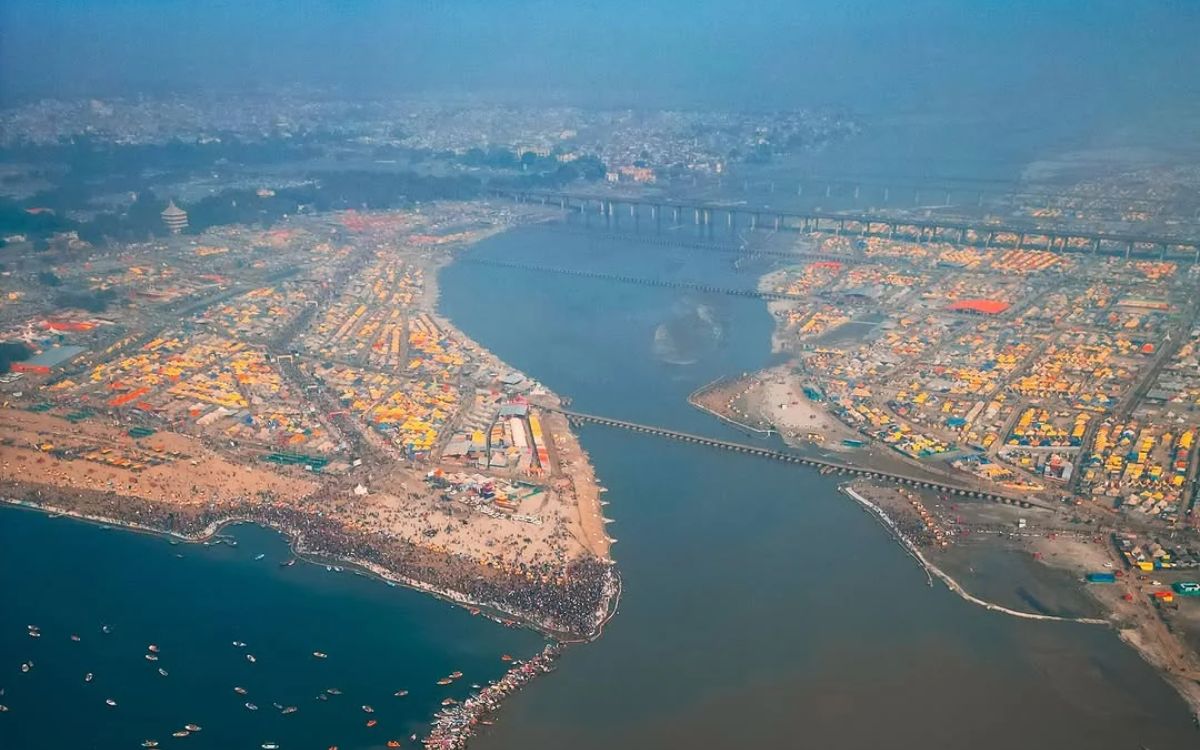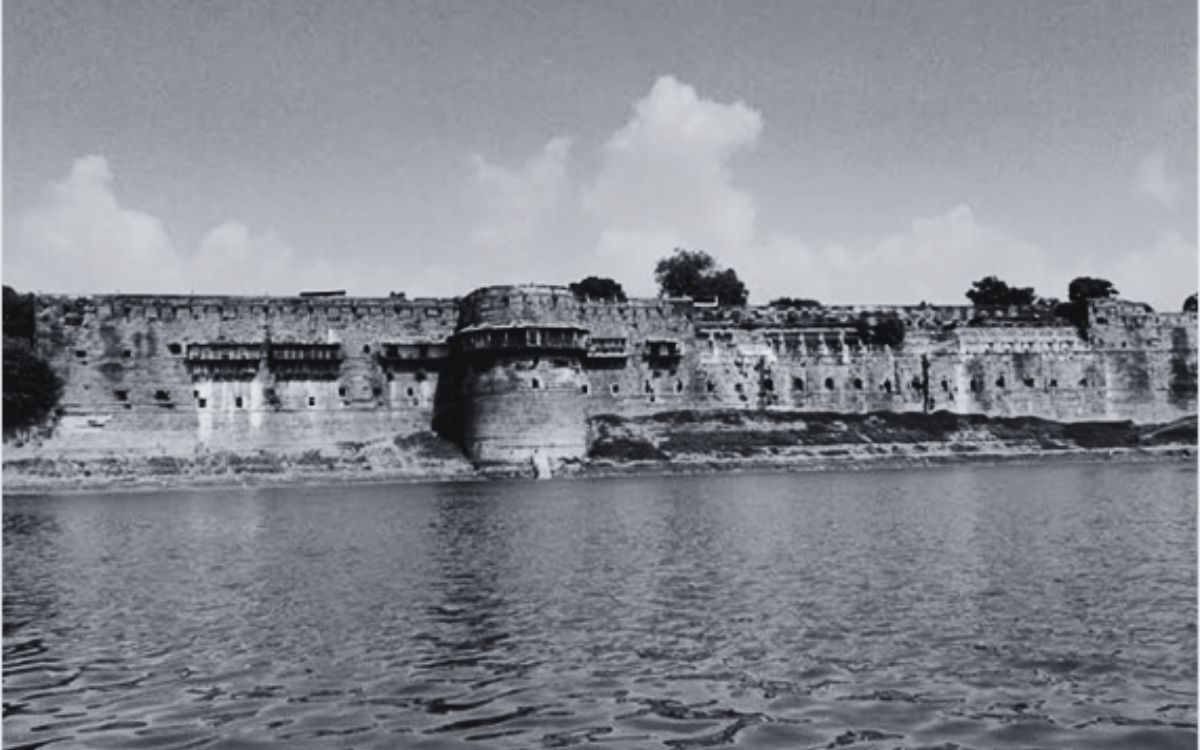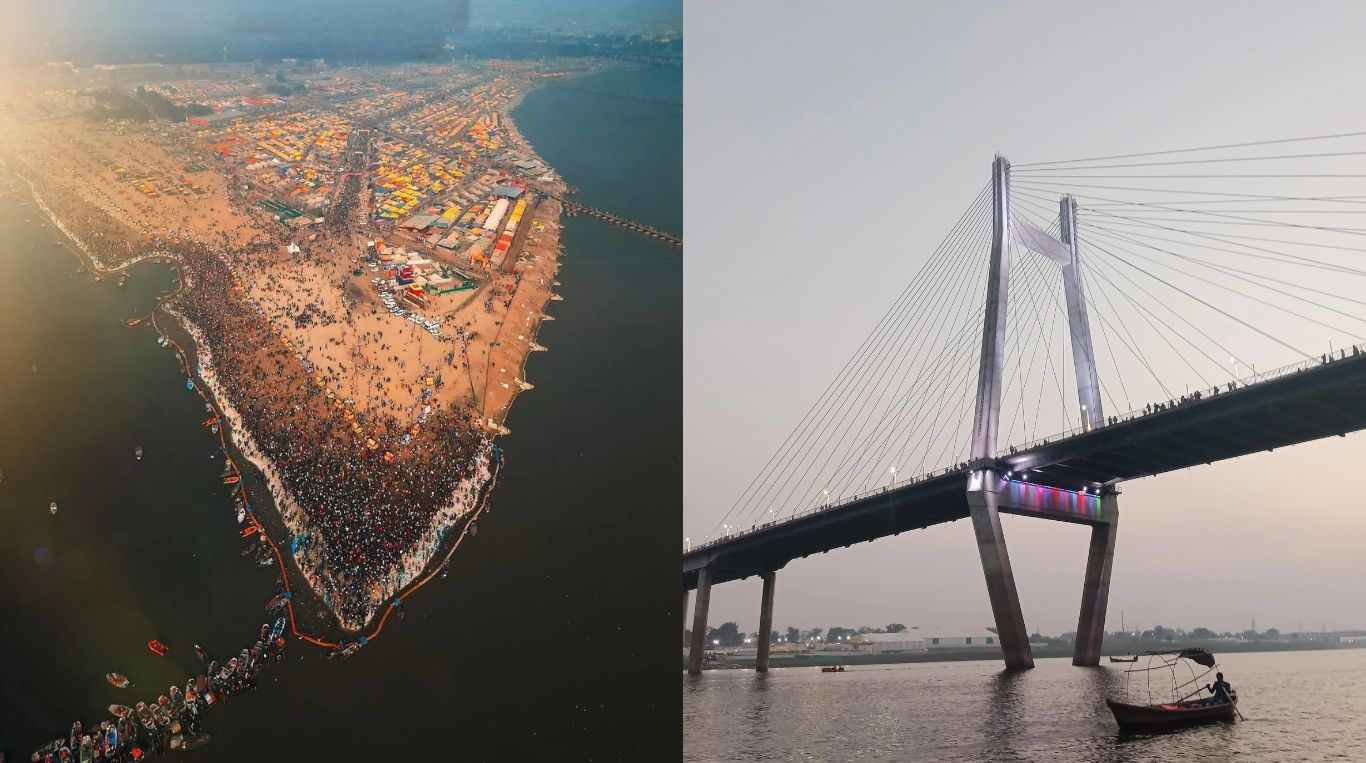Prayagraj, earlier known as Allahabad, is an important city located in Uttar Pradesh, India. It is famous because three rivers meet here, making it a special place for people all over India.
1. Rivers in Prayagraj
Triveni Sangam
Prayagraj is famous for the “Triveni Sangam,” where the rivers Ganga, Yamuna, and the invisible Saraswati come together. Many people believe bathing here cleanses their sins. It is the location for the huge Kumbh Mela festival, which happens every 12 years.
Importance of Rivers
The Ganga and Yamuna rivers provide water for farming and drinking. Fishermen catch fish here, and local farmers use the river water for their crops. During heavy rains in the monsoon season, rivers often overflow, causing floods.
Floods
Floods happen regularly in Prayagraj, especially during heavy monsoons. The worst flood occurred in 1978, covering most parts of the city in water. Recently, floods in 2021 also affected many areas, forcing people to move to safer places.
2. Climate of Prayagraj
Prayagraj has a climate with three main seasons:
- Summer (March to June): Summers are very hot, with temperatures often above 40°C (104°F). Sometimes heatwaves can cause temperatures to rise even higher, making it uncomfortable to be outside during the day.
- Monsoon Season (July–September): The monsoon brings lots of rain, usually in August. The city receives around 1,027 mm of rain yearly, making rivers full and sometimes leading to flooding.
- Winter (October–February): Winters are pleasant and cool, with temperatures between 8°C and 20°C (46°F to 68°F). January is usually the coldest month.
Climate change has made the weather less predictable, causing hotter summers and more irregular rainfalls.
3. Terrain and Soil
Landscape and Elevation
Most of Prayagraj city is located on flat plains between two major rivers—the Ganga and Yamuna. The city lies about 98 meters above sea level, making the land very good for farming.
As you travel to the south, the land rises and becomes rocky and hilly. This area is part of the Vindhyan plateau, with some hills reaching up to 375 meters high.
Soil and Agriculture
The northern areas near the rivers have rich, fertile soil known as “alluvial soil,” ideal for growing wheat, rice, pulses, and sugarcane. Farmers depend on the fertile soil and river water for agriculture. In contrast, the southern regions have rockier, less fertile soil where farmers mainly grow millet and pulses.
4. Plants and Animals
Prayagraj is home to many plants and animals. Birds like peacocks, parrots, and migratory birds often visit the riverbanks. The rivers also host various fish and turtles. The city is establishing special areas, like the Turtle Sanctuary and River Biodiversity Park, to protect wildlife.
4. Environmental Problems and Solutions
River Pollution
The Ganga and Yamuna rivers are polluted mainly due to untreated sewage. The government has launched programs such as “Namami Gange” to clean the rivers by setting up sewage treatment plants to reduce pollution.
Soil and Land Issues
Flooding and overuse of land have led to soil erosion. Authorities encourage practices like planting trees, using better farming methods, and creating embankments along rivers to prevent floods and erosion.
Conclusion
The geography of Prayagraj, including its rivers, climate, and terrain, significantly affects the lives of its people. By understanding and addressing environmental challenges, the city continues to grow while protecting its natural resources for future generations.


